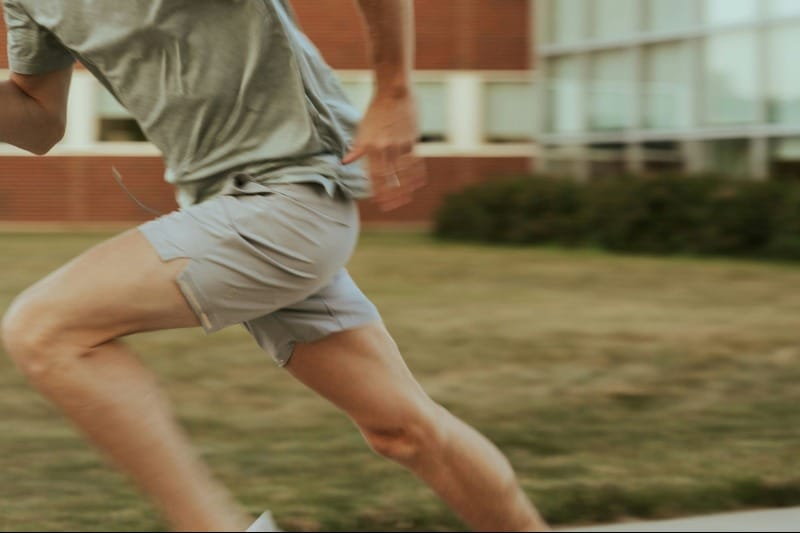Stroke survivors often face significant challenges in regaining their physical abilities and overall health. Traditional rehabilitation methods have focused on gentle, low-intensity exercises. However, recent research suggests that brief bursts of intense exercise may offer surprising benefits for stroke survivors. This article explores the potential advantages of high-intensity interval training (HIIT) for those recovering from strokes and how it might revolutionize stroke rehabilitation.
Key Takeaways:
- Brief, intense exercise sessions may improve cardiovascular health in stroke survivors.
- High-intensity interval training (HIIT) can be safe and effective for stroke patients.
- HIIT may lead to better walking ability and overall physical function.
- Researchers found HIIT to be more effective than traditional moderate-intensity exercise.
- Consult with healthcare providers before starting any new exercise regimen.
For years, stroke survivors have been advised to take it easy when it comes to exercise. The common belief was that gentle, low-intensity activities were the safest and most effective way to regain strength and mobility. However, a groundbreaking study from the University of Nebraska at Omaha is challenging this long-held notion, suggesting that brief bursts of intense exercise might actually be more beneficial for stroke recovery.
Understanding High-Intensity Interval Training (HIIT)
High-Intensity Interval Training, or HIIT, is a form of exercise that alternates between short periods of intense activity and periods of rest or lower-intensity exercise. This type of workout has gained popularity in recent years due to its efficiency in improving cardiovascular health and overall fitness in less time than traditional steady-state exercise.
The Surprising Benefits for Stroke Survivors
The study, led by researchers at the University of Nebraska at Omaha, found that stroke survivors who participated in HIIT sessions showed significant improvements in their cardiovascular health and walking ability. These findings are particularly exciting because they suggest a potentially faster and more effective path to recovery for many stroke patients.
Improved Cardiovascular Health
One of the most striking results of the study was the improvement in cardiovascular health among participants. Stroke survivors who engaged in HIIT showed better heart function and increased endurance. This is crucial because stroke survivors often face an increased risk of future cardiovascular events, and improving heart health can be a vital part of long-term recovery and prevention.
Enhanced Walking Ability
Another significant benefit observed in the study was improved walking ability. Participants who underwent HIIT training showed better gait patterns and increased walking speed. For many stroke survivors, regaining the ability to walk independently is a primary goal, and these findings suggest that HIIT could be a valuable tool in achieving this objective.
Faster Recovery Times
Perhaps most surprisingly, the study found that HIIT led to faster improvements in overall physical function compared to traditional moderate-intensity exercise. This means that stroke survivors might be able to regain their independence and quality of life more quickly through this type of training.
Safety Considerations
While the results of the study are promising, it's important to note that HIIT should only be undertaken under proper supervision and with medical clearance. The researchers emphasized that the intense exercise sessions were carefully monitored and tailored to each participant's abilities and limitations.
Personalized Approach
One key aspect of the study was the personalized approach to HIIT. Each participant's exercise routine was designed based on their individual capacity and gradually increased in intensity as they progressed. This tailored approach is crucial for ensuring safety and maximizing benefits for stroke survivors.
Professional Guidance
The study highlights the importance of professional guidance when implementing HIIT for stroke survivors. Trained therapists and exercise physiologists played a crucial role in designing and overseeing the exercise programs, ensuring that participants were challenged without being put at risk.
Comparing HIIT to Traditional Rehabilitation Methods
The study also compared HIIT to more traditional, moderate-intensity exercise programs commonly used in stroke rehabilitation. The results showed that HIIT was not only safe for stroke survivors but also more effective in improving cardiovascular health and physical function.
Time Efficiency
One advantage of HIIT is its time efficiency. The study found that participants could achieve significant improvements with shorter exercise sessions compared to traditional methods. This could be particularly beneficial for stroke survivors who may struggle with fatigue or have limited time for rehabilitation.
Motivation and Adherence
Interestingly, the researchers noted that participants in the HIIT group showed higher levels of motivation and adherence to their exercise programs. The variety and challenge of HIIT sessions seemed to keep participants more engaged, which could lead to better long-term outcomes in stroke recovery.
Implementing HIIT in Stroke Rehabilitation
While the study's results are promising, it's important to remember that HIIT should be implemented carefully and gradually for stroke survivors. Here are some key considerations:
- Medical Clearance: Always consult with a healthcare provider before starting any new exercise program, especially one involving high-intensity activities.
- Professional Supervision: HIIT sessions should be designed and supervised by trained professionals who understand the unique needs and limitations of stroke survivors.
- Gradual Progression: Start with lower intensities and gradually increase as strength and endurance improve.
- Individualized Approach: Exercise programs should be tailored to each individual's abilities, limitations, and recovery goals.
- Regular Monitoring: Close monitoring of vital signs and overall well-being during and after exercise sessions is crucial.
The Future of Stroke Rehabilitation
The findings from this study open up exciting possibilities for the future of stroke rehabilitation. As more research is conducted in this area, we may see a shift towards incorporating more high-intensity exercise into standard rehabilitation protocols.
Potential for Wider Application
While this study focused on stroke survivors, the principles of HIIT could potentially be applied to rehabilitation for other neurological conditions. Further research could explore the benefits of this approach for patients with conditions such as Parkinson's disease or multiple sclerosis.
Technology Integration
As rehabilitation techniques evolve, we may see more integration of technology to support HIIT programs for stroke survivors. This could include specialized equipment, wearable devices for monitoring, and even virtual reality systems to make exercise sessions more engaging and effective.
Conclusion
The discovery that brief bursts of intense exercise can benefit stroke survivors represents a significant shift in our understanding of stroke rehabilitation. While more research is needed to fully understand the long-term effects and optimal implementation of HIIT for stroke recovery, these findings offer new hope for faster and more effective rehabilitation.
For stroke survivors and their families, this research opens up new possibilities for recovery. However, it's crucial to approach any new exercise regimen with caution and under professional guidance. As always, the key to successful rehabilitation lies in a personalized approach that takes into account each individual's unique needs and circumstances.
As we continue to learn more about the benefits of high-intensity exercise for stroke recovery, we may be on the cusp of a new era in rehabilitation – one that empowers stroke survivors to reclaim their health and independence more quickly and effectively than ever before.













Member discussion